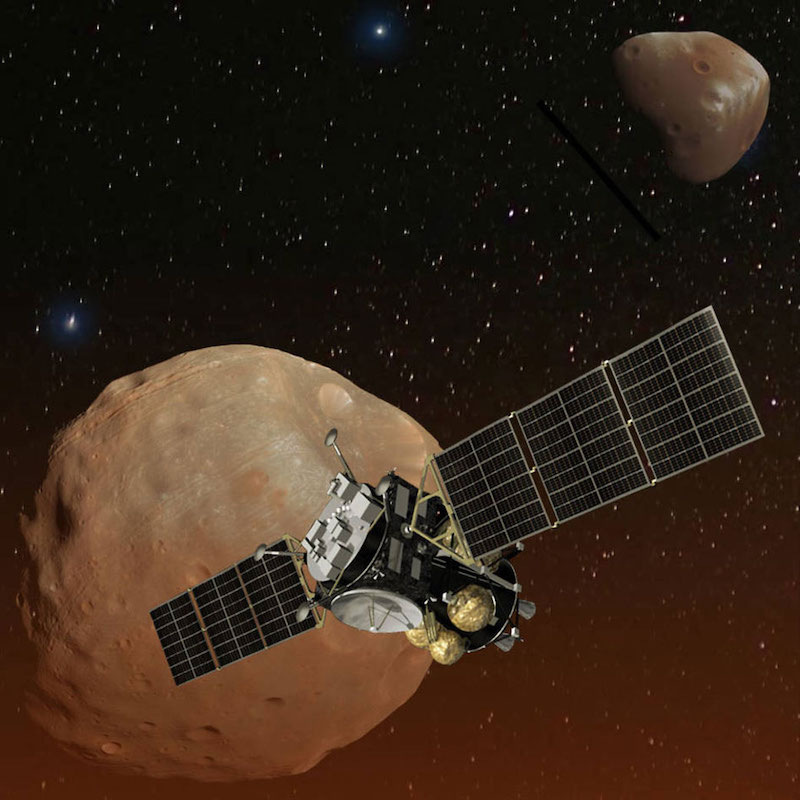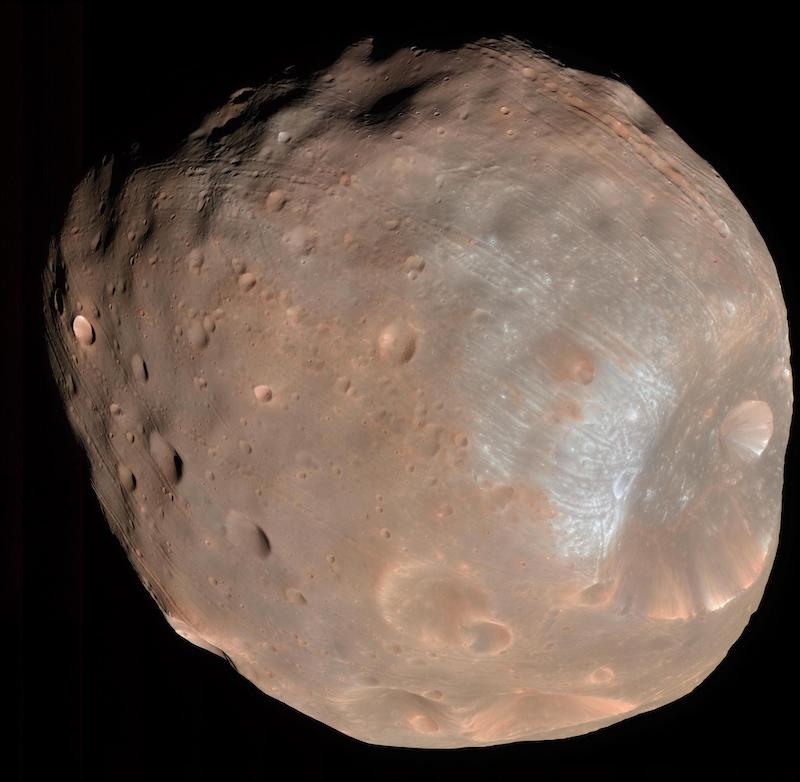
If they’ve survived, the 50 spacecraft that’ve gone to Mars have focused mostly on Mars itself. But that’ll soon change, with a mission from the Japan Aerospace Exploration Agency (JAXA), due to launch in 2024. It’ll focus on the two small moons of Mars, Phobos and Deimos. On April 18, 2023, NASA announced 10 U.S.-based scientists who will be joining the science working team for the Japanese mission. The mission is called Martian Moons eXploration, aka MMX.
JAXA tweeted its congratulations:
Congratulations to the ten US-based researchers who have been selected by NASA to join the science working team for MMX! The wide range of expertise is incredible and we cannot wait to see what we will discover with you when we reach Phobos and Deimos!https://t.co/Q2rp9KCyGR
— Martian Moons @JAXA (@mmx_jaxa_en) April 20, 2023
1st group: flight instrument research
The 10 scientists are divided into two groups, one with seven people and the other with three. The first group will conduct research using MMX’s flight instruments. That group includes:
– Olivier Barnouin, Johns Hopkins Applied Physics Laboratory, Laurel, Maryland. Barnouin will create high-resolution digital terrain models of the Martian moons, measuring the properties of surface features and studying the properties of the Phobos regolith through its interaction with the rover.
– Matteo Crismani, California State University, San Bernardino, California. Crismani will study the particles of interplanetary dust that strike Mars and their role in the formation of high-altitude ice clouds in the Martian atmosphere.
– R. Terik Daly, Johns Hopkins Applied Physics Laboratory, Laurel, Maryland. Daly will search for surface changes on Phobos and Deimos by comparing MMX image data with past missions’ imagery of the two moons.
– Christopher Edwards, Northern Arizona University, Flagstaff, Arizona. Edwards will apply a thermophysical model to MMX infrared spectra in order to map the variations in spectral properties and surface roughness across Phobos and Deimos.
– Abigail Fraeman, NASA’s Jet Propulsion Laboratory, California. Fraeman will combine data from different MMX instruments to learn more about the moons’ compositions and to test hypotheses about the sources of enigmatic spectral absorptions observed on Phobos.
– Sander Goossens, NASA’s Goddard Space Flight Center, Greenbelt, Maryland. Goossens will use data from the MMX instruments and navigation data from the spacecraft to constrain the moons’ gravity fields, shapes, rotational states and internal mass distributions.
– Christine Hartzell, University of Maryland, College Park, Maryland. Hartzell will explore the physical properties of Phobos’ surface regolith by using rover data to identify regolith clumps and constrain the forces needed to hold them together.
2nd group: Sample return to Earth
Later, the second group will focus on samples that the mission will bring back to Earth from Phobos. They are:
– Nicolas Dauphas, University of Chicago, Illinois. Dauphas will utilize mass spectrometer techniques to determine elemental and isotopic abundances of iron, potassium and other elements, and to measure ages using rubidium-strontium dating.
– Jemma Davidson, Arizona State University, Tempe, Arizona. Davidson will use microscopy and mass spectrometry methods to analyze opaque minerals in the Phobos samples to elucidate the origin of Phobos and its later alteration history.
– Daniel Glavin, NASA’s Goddard Space Flight Center, Greenbelt, Maryland. Glavin will study amino acids, cyanides, amines, aldehydes, ketones and hydroxy and monocarboxylic acids using gas and liquid chromatography mass spectrometry.
Additional NASA support for Mars’ moons mission
In addition, NASA is also supplying the mission with the Pneumatic Sampler (P-Sampler) technology demonstration and the Mars-moon Exploration with GAmma rays and NEutrons (MEGANE) spectrograph instrument.
Likewise, Honeybee Robotics, sponsored by NASA’s Science Mission Directorate, designed and built the P-Sampler. Johns Hopkins University Applied Physics Laboratory built MEGANE, which was developed under NASA’s Discovery Program.

Exploring Phobos and Deimos
JAXA is planning to launch MMX in 2024. The spacecraft will arrive about a year later. Then, after entering orbit around Mars, it will enter a Quasi-Satellite Orbit (QSO) around Phobos. A quasi-satellite is an object in a co-orbital configuration (1:1 orbital resonance) where the object stays close to the planet over many orbital periods.
MMX will explore both Phobos and Deimos, but will, in particular, have a special focus on Phobos. In fact, it will collect samples from Phobos with the goal of returning them to Earth in 2029. Indeed, MMX will be the first mission to ever attempt this.
Overall, the primary science objectives are to better understand the origin of both moons. Even now, there is still much debate among scientists as to how they originated. Did they form along with Mars or are they captured asteroids?
Also, the mission will help improve technology for future exploration of Mars.
The UAE’s Hope Mars mission also just released new images of Deimos, which you can read more about here.
Main objectives of Mars’ moons mission
According to JAXA, the main objects of the mission are:
– To investigate whether the Martian moons are captured asteroids or fragments that coalesced after a giant impact with Mars, and to acquire new knowledge on the formation process of Mars and the terrestrial planets.
– To clarify the mechanisms controlling the surface evolution of the Martian moons and Mars, and to gain new insights into the history of the Mars sphere, including that of the Martian moons.
– To understand the origin and evolution of the planets that leads to the start of life.
Mars’ moons have long fascinated both scientists and the public alike. American astronomer Asaph Hall first discovered them in August 1877. Now, within the next couple of years, we will get our closest look at them yet, and even bring a little bit of them home.
Read more about the Martian Moons eXploration mission
Bottom line: NASA announced last week that it has chosen 10 scientists from across the U.S. to help with Mars’ moons mission called Martian Moons eXploration (MMX).











